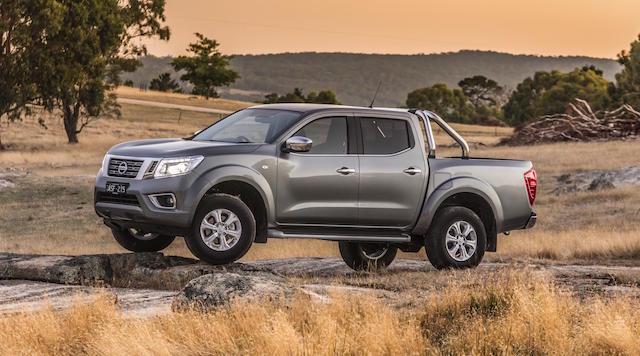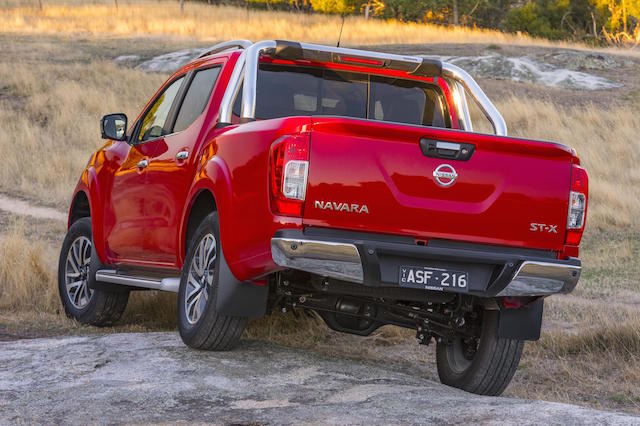
The sales figures over the past two-and-a-half years tell the story of why Nissan needed to make improvements to its D23 Navara ute, marketed in New Zealand as the NP300.
The one-tonner’s sales have been down year-on-year since its launch here in June 2015. Navara registrations in 2016 were down 1.7 per cent on 2015; 2017 were down 1.2 per cent on 2016.
It is not a calamitous decline by any means, but it is made worse by the success of its rivals. The Ford Ranger, Toyota Hilux, Mitsubishi Triton, Holden Colorado, and Isuzu D-Max had sales hikes over the same period of between 4 and 40 per cent.
Below are the 2015, 2016, and 2017 registrations for the six main utes. Navara sales in 2015 also included the outgoing model.
2015
Ranger – 6818
Hilux – 5623
Colorado – 3586
Navara – 3146
Triton – 2429
D-Max – 1696
2016
Ranger – 8478 … up 24.3% on 2015
Hilux – 6187 … up 10%
Colorado – 3739 … up 4.2%
Triton – 3182 … up 31%
Navara – 3093 … down 1.7%
D-Max – 2386 … up 40.6%
2017
Ranger – 9420 … up 11% on 2016
Hilux – 8106 … up 31%
Colorado – 4489 … up 20%
Triton – 4070 … up 28%
Navara – 3055 … down 1.2%
D-Max – 2506 … up 5%
So how come D23 Navara, its predecessors once the main rivals for Hilux models in this country, has pretty much stayed still on the sales charts?
The answer lies in the tolerance of its five-link rear coil spring suspension – a first for a one-tonner in NZ – and whirling steering ratio, or the number of turns of the helm it takes to fully turn the front wheels either left or right.
First, the steering changes to the biggest selling double-cab SL, ST and ST-X. There was a joke of sorts a while back that going lock-to-lock on the Navara’s steering wheel was not unlike a forklift driver twirling the tiller in a tight squeeze.
It took 4.1 turns of the Navara’s helm to turn the front wheels to the maximum left or right angle. The revisions Nissan has made have reduced the turns to 3.4, meaning fewer turns of the wheel to change direction. In the process the steering is lighter.
The new ratio works hand-in-hand with the heavily revised rear coils, says Nissan. The problem with Navara’s original coil set-up was that it couldn’t match the load-lugging ability of its rivals, all of which used a leaf-sprung rear. Towing its braked maximum of 3500kg also handicapped it.
Feedback to Nissan was that Navara coped well with around half its 930kg payload, but when loaded up to the maximum and beyond (which users often do), the coil set-up reached its bump-stop limit and the rear sagged and became unsettled.

Nissan engineers set out to maintain Navara’s reputation as a composed workday/weekend vehicle when largely unladen, while adding more control over the rear end when lumping a load and/or towing.
They replaced the original coils with stronger “dual-pitch” ones and teamed them with improved rebound rates in the shock absorbers. Unlike coils with uniform spacing between each twist, the dual pitch coils are twisted in two different distances at either end, a design unique to the class.
The aim was to maintain Navara’s supple on-road ride when largely unladen, but improve it when towing or carrying a load in the tray. The change is visible. Unladen, Navara’s rear end now sits around 25mm higher.
Engines for the Navara range in NZ continue to be the Renault-built 2.3-litre four-cylinder turbo diesels, the single turbo delivering 120kW/403Nm and the twin-turbo 140kW/450Nm. Gearboxes are a six-speed manual or seven-speed auto.
The two-wheel-drive RX cab/chassis starts the 18-model range off at $37,990 and the four-wheel-drive ST-X double-cab rounds it off at $64,490.

